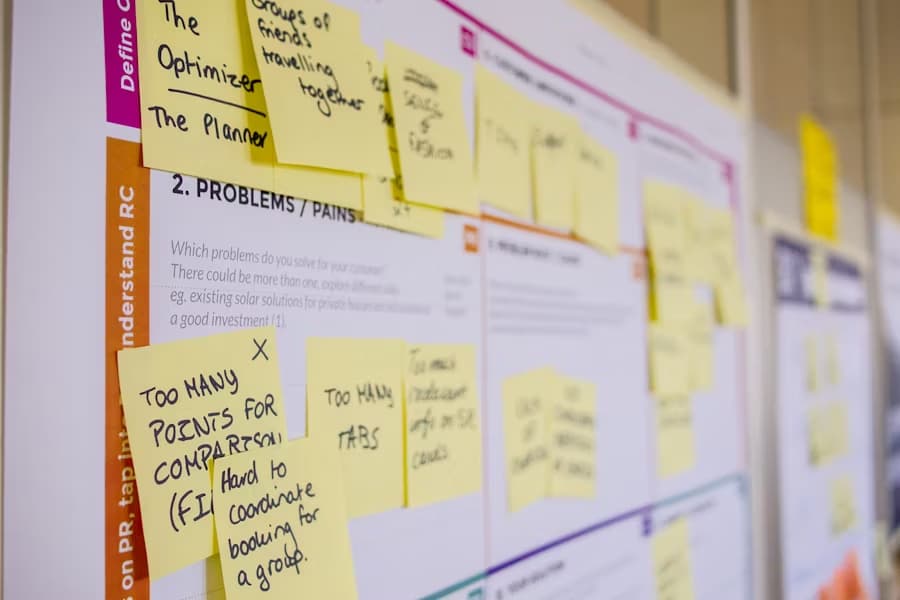In the modern era characterized by rapid pace, mastering the art of effective time management stands as a cornerstone for achieving both personal fulfillment and professional triumph. It is imperative to hone skills that aid in prioritizing tasks, establishing objectives, and amplifying productivity levels. Within the confines of this discourse, you will delve into an array of time management activities and exercises tailored to enhance your operational efficiency and actualize your aspirations.
Crafted to be immersive, enjoyable, and pragmatic, these time management activities and exercises serve as invaluable tools for individuals or collectives alike. Versatile in nature, they lend themselves well to personal enhancement endeavors as well as organizational training initiatives. Through the integration of these practices into your daily regimen, you shall witness a swift enhancement in your aptitude to wield time judiciously, facilitating the attainment of more significant milestones with heightened ease and finesse.
Mastering Deadlines and Reminders: Elevate Your Time Management Skills
In the realm of effective time management, the judicious use of deadlines and reminders can be transformative. These tools serve as anchors in the tempest of tasks, providing structure, urgency, and accountability to your workflow. Let’s delve into the art of setting deadlines and crafting reminders to propel your productivity to new heights.
Setting Realistic Deadlines:
When embarking on any project or task, the first step is to establish deadlines that are both challenging and achievable. Here’s how to do it:
- Break Tasks into Bite-sized Chunks: Instead of overwhelming yourself with mammoth undertakings, dissect them into smaller, digestible milestones. Each milestone should have its deadline, making the overall endeavor more manageable and less daunting;
- Assess Your Capacity: Be honest with yourself about your capabilities and resources. Setting unrealistic deadlines only invites stress and diminishes the quality of your output. Strike a balance between ambition and pragmatism;
- Consider External Factors: Anticipate any external dependencies or potential roadblocks that could affect your timeline. Account for these variables when setting deadlines to mitigate risks and avoid last-minute scrambles.
Crafting Effective Reminders:
Once deadlines are in place, reminders act as vigilant sentinels, ensuring that no task slips through the cracks. Here’s how to wield reminders effectively:
- Leverage Digital Tools: Embrace the plethora of digital aids at your disposal, from calendar applications to task management software. These tools offer customizable reminders tailored to your workflow, keeping you on track with precision;
- Strategic Timing: Set reminders strategically, providing ample lead time to tackle impending deadlines without feeling rushed. Consider scheduling reminders at key junctures in your projects to maintain momentum and course-correct if necessary;
- Visual Reinforcement: Harness the power of visual cues to reinforce your memory and enhance task prioritization. Color-code your reminders or categorize them based on urgency to ensure that nothing escapes your attention amidst the hustle and bustle.
Embracing a Digital Detox Lifestyle: Enhancing Well-being in a Hyper-Connected World
In the hustle and bustle of modern living, finding moments of peace and clarity amidst the digital noise has become paramount for our mental and emotional well-being. A digital detox isn’t merely a trend; it’s a necessary practice to reclaim control over our time and attention. Let’s delve into practical strategies and insights to integrate this detox seamlessly into your daily life.
1. Scheduled Screen Breaks
Incorporating intentional breaks from screens into your daily routine can work wonders for your overall well-being. Here’s how you can do it:
- Lunchtime Liberation: Instead of scrolling through your phone during lunch breaks, opt for activities that nourish your soul and body. Take a stroll outdoors, savor your meal mindfully, or engage in light conversation with colleagues;
- Post-Work Rituals: Designate specific hours after work for screen-free activities. This could involve hobbies like painting, cooking, or playing an instrument. Engaging in these pursuits not only reduces screen time but also fosters creativity and relaxation.
2. Taming Notifications
Constant pings and notifications can hijack your attention and derail productivity. Take control of your digital environment with these tips:
- Selective Silencing: Identify essential apps or contacts that warrant immediate attention and silence notifications for the rest. This ensures that you’re not bombarded with non-urgent alerts throughout the day;
- Scheduled Check-ins: Allocate specific times to check emails, messages, and social media updates rather than succumbing to impulsive checking. Setting boundaries around digital communication fosters a sense of control and reduces stress.
3. Nature Therapy
Nature serves as a potent antidote to digital overload, offering tranquility and perspective. Here’s how to integrate nature into your digital detox:
- Outdoor Escapes: Schedule regular outings to natural settings such as parks, forests, or beaches. Engage in activities like hiking, birdwatching, or picnicking to immerse yourself fully in the healing embrace of nature;
- Green Spaces at Home: If outdoor excursions aren’t feasible, create green sanctuaries within your living space. Indoor plants not only purify the air but also evoke a sense of calm and connection with the natural world.
4. Mindful Consumption
Conscious consumption of digital content is key to preventing information overload and preserving mental clarity. Follow these guidelines for a more mindful approach:
- Curated Content: Be discerning about the media you consume, opting for sources that enrich your knowledge and well-being. Unfollow accounts or unsubscribe from newsletters that induce stress or negativity;
- Set Limits: Establish clear boundaries around screen time by setting daily or weekly limits on app usage. Utilize built-in features or third-party apps to track and manage your screen time effectively.
5. Screen-Free Mornings
Kickstart your day on a serene note by refraining from digital devices in the morning. Here’s how to cultivate a screen-free morning routine:
Rise and Shine Rituals: Begin your day with activities that nourish your mind, body, and spirit. This could include meditation, yoga, journaling, or enjoying a leisurely breakfast without distractions.
Unlocking Time Mastery: Your Guide to Time Management Workshops or Courses
In today’s fast-paced world, mastering the art of time management is crucial for success both in your professional endeavors and personal pursuits. Attending time management workshops or courses can be a game-changer, offering you practical strategies and insights to optimize your time utilization effectively.
When embarking on your journey to enhance your time management skills through workshops or courses, it’s essential to select the right program tailored to your unique needs and objectives. Here’s how you can make the most out of your experience:
- Assess Your Needs: Reflect on your current time management challenges and goals. Are you struggling with prioritization? Do distractions derail your productivity? Identifying your specific areas for improvement will guide you in choosing the most relevant workshop or course;
- Research Course Options: Explore a variety of workshops or courses available, ranging from online platforms to face-to-face sessions. Consider factors such as course content, duration, and the credibility of instructors. Look for reviews or testimonials from past participants to gauge the effectiveness of the program;
- Choose Your Learning Style: Whether you prefer interactive workshops, self-paced online modules, or a blend of both, there’s a format that suits your learning style and schedule. Opt for a program that aligns with how you best absorb and retain information;
- Topics Covered: Expect to delve into a range of valuable topics during the workshops or courses, including:
- Prioritization Techniques: Learn how to identify and focus on tasks with the highest impact to maximize productivity;
- Goal-Setting Strategies: Develop clear, actionable goals that propel you towards success in your professional and personal life;
- Time Management Tools: Discover the latest apps and tools designed to streamline scheduling, task management, and delegation;
- Effective Delegation: Master the art of delegating tasks to others to optimize efficiency and maintain focus;
- Managing Distractions: Acquire techniques for minimizing distractions and handling interruptions to stay on track with your tasks.
- Networking Opportunities: One of the invaluable benefits of attending these workshops or courses is the chance to connect with like-minded professionals facing similar time management challenges. Engage in discussions, share insights, and exchange best practices to enhance your learning experience;
- Application and Practice: The true value of time management workshops or courses lies in their application to your daily routines. Commit to implementing the techniques and strategies you’ve learned consistently. Regularly evaluate your progress and adjust your approach as needed to ensure continuous improvement.
Cultivating Gratitude for Enhanced Time Management
In the hustle and bustle of modern life, finding ways to manage time effectively is a constant challenge. However, integrating gratitude practices into your daily routine can be a game-changer, not only for your mindset but also for your productivity and time management skills. Here are some creative and effective strategies to infuse gratitude into your life and reap the benefits:
Gratitude Journaling
Keeping a gratitude journal is like capturing rays of sunlight in a bottle, allowing you to bask in its warmth whenever you need it. Dedicate a few minutes each day, preferably before bedtime, to jot down five things you’re grateful for. These could be significant achievements, moments of joy, supportive people in your life, or even simple pleasures. By reflecting on the positives, you shift your focus away from stressors and train your mind to seek out the good. Here’s how to make the most of your gratitude journaling:
- Consistency is Key: Make it a habit to write in your gratitude journal every day, even if it’s just a few sentences;
- Be Specific: Instead of generic statements, delve into the specifics of what you’re grateful for. This enhances the emotional impact and reinforces positive feelings;
- Express Emotions: Don’t hesitate to express how each gratitude entry makes you feel. Emotions add depth to your reflections and strengthen their effect on your mindset.
Gratitude Moments
Life is a tapestry woven with countless threads of moments, some fleeting and others everlasting. Amidst the chaos of your day, take a few moments to pause and acknowledge the beauty around you. Whether it’s a kind gesture from a colleague, a stunning sunrise, or a moment of solitude, these instances of gratitude act as anchors, grounding you in the present and infusing your day with positivity. Here’s how to incorporate gratitude moments into your routine:
- Set Reminders: Use alarms or calendar notifications to prompt yourself to take gratitude breaks throughout the day;
- Practice Mindfulness: Engage your senses and fully immerse yourself in the present moment during gratitude pauses. Notice the sights, sounds, and sensations around you;
- Share the Joy: If possible, share your moments of gratitude with others. Sharing doubles the joy and strengthens social connections.
Gratitude Exercises
Gratitude is a muscle that grows stronger with exercise. Beyond journaling, incorporate gratitude practices into your daily life to amplify their effects. Whether through meditation, verbal expressions of appreciation, or acts of kindness, these exercises deepen your sense of gratitude and cultivate a positive outlook. Here are some exercises to try:
- Gratitude Meditation: Dedicate a few minutes each day to meditate on the things you’re grateful for. Focus on your breath and let feelings of gratitude wash over you;
- Express Appreciation: Take the time to verbally express your gratitude to others. Whether it’s a heartfelt thank-you note or a simple acknowledgment, spreading gratitude fosters positivity in your interactions;
- Random Acts of Kindness: Incorporate acts of kindness into your daily routine. Whether it’s holding the door for someone or offering a helping hand, small gestures can have a ripple effect of gratitude.
Gratitude Hot Seat
Team dynamics play a crucial role in organizational success, and fostering a culture of gratitude can significantly enhance teamwork and productivity. The gratitude hot seat activity is a fun and effective way to promote appreciation within your team. Here’s how it works:
- Setup: Gather your team in a comfortable space where everyone can see and hear each other;
- Rotation: Designate a ‘hot seat’ where one team member sits while others take turns expressing their appreciation for them;
- Guidelines: Encourage team members to be specific and genuine in their compliments. Focus on both professional and personal qualities;
- Benefits: Besides boosting morale and fostering a sense of camaraderie, the gratitude hot seat activity encourages team members to recognize each other’s strengths and contributions, leading to improved collaboration and time management.
Unlocking Productivity: Mastering the Time Audit
Embarking on a time audit journey can be the key to unlocking hidden pockets of productivity in your daily life. This invaluable activity delves into the depths of your time allocation, offering insights and strategies to optimize your efficiency. Here’s how to embark on this transformative journey:
1. Select Your Week
Choose a typical week to conduct your time audit. Selecting a week that aligns with your regular routine ensures that your findings accurately represent your average time usage. Whether it’s a week filled with back-to-back meetings or one peppered with personal commitments, make sure it reflects your usual schedule.
2. Record with Precision
During your chosen week, meticulously document your daily activities. From work-related tasks like drafting emails to personal endeavors such as catching up with friends, leave no stone unturned. Consistency is key; ensure you record your activities daily to capture a comprehensive snapshot of your time allocation.
3. Categorize and Conquer
As you compile data from your week-long audit, categorize your activities into distinct groups. This segmentation—whether it be work-related, personal, leisure, or other—provides a visual roadmap of where your time is predominantly invested. It illuminates patterns and highlights areas ripe for optimization.
4. Scrutinize and Strategize
With your activities neatly categorized, scrutinize the time spent on each task. Question the necessity of every endeavor, distinguishing between essential, delegable, and eliminable activities. This critical assessment lays the groundwork for strategic decision-making, empowering you to reclaim precious time lost to inefficiencies.
5. Craft Your Blueprint
Armed with insights from your time audit, reimagine your daily schedule. Tailor it to reflect your newfound understanding of time allocation, optimizing for productivity and balance. Consider outsourcing or delegating tasks where possible, freeing up mental bandwidth for high-impact endeavors. Embrace flexibility and experimentation as you refine your blueprint for optimal time management.
6. Cultivate Continual Improvement
The journey doesn’t end with a single time audit. Regularly revisit and refine your time management strategies. Schedule periodic audits to ensure alignment with evolving priorities and commitments. Embrace the iterative nature of productivity enhancement, continually fine-tuning your approach to make the most of every fleeting moment.
Enhance Your Productivity with Top Time Management Apps and Tools
In the fast-paced world we live in, managing our time effectively is crucial for success. Thankfully, there’s a plethora of time management apps and tools available to streamline our tasks, boost productivity, and keep us organized. Whether you’re a freelancer juggling multiple projects, a busy parent balancing work and family life, or a team leader overseeing a group of collaborators, there’s something for everyone in the realm of time management applications.

Best Time Management Apps of 2023
- Todoist: This versatile app reigns as the top choice for overall time management. It empowers users to create, organize, and prioritize tasks effortlessly. With features like setting deadlines, tracking progress, and categorizing tasks, Todoist ensures you stay on top of your to-do list;
- Toggl Track: Ideal for professionals aiming to optimize their work hours, Toggl Track simplifies time tracking across various tasks and projects. It provides valuable insights into time utilization, helping users identify inefficiencies and improve productivity;
- TimeTree: When it comes to managing personal commitments alongside professional obligations, TimeTree shines. Acting as a shared calendar app, it facilitates seamless coordination of events, appointments, and to-dos among family members, friends, or colleagues;
- Trello: For collaborative endeavors, Trello emerges as a go-to tool. Its intuitive interface enables efficient project and task management, fostering teamwork and enhancing productivity. With customizable boards, lists, and cards, Trello adapts to diverse workflows with ease;
- Calendar: Beyond basic scheduling, Calendar offers advanced features to optimize time management. From minimizing no-show appointments to streamlining scheduling processes, this app ensures smooth coordination of your day-to-day activities;
- Remember the Milk: This cross-platform app acts as a personal assistant, aiding users in organizing tasks and setting timely reminders. Never miss a deadline or forget an important task again with Remember the Milk’s user-friendly interface and robust features.
Other Time Management Tools
- Clockify: Gain insights into your work hours and enhance productivity with this comprehensive time tracker;
- Habitica: Transform mundane tasks into engaging quests with this RPG-style task manager, designed to gamify your to-do list;
- Plaky: Streamline project management and task delegation with this versatile software, perfect for team collaboration;
- ProofHub: Simplify work management and team communication with this all-in-one platform, designed to keep projects on track;
- Pumble: Foster seamless communication and collaboration among team members with this intuitive platform;
- Asana: Empower your team with effective task organization, progress tracking, and collaboration features;
- Flow: Keep multiple projects organized and prioritized with this project and team manager, ensuring everyone stays aligned.
Optimizing Productivity through Delegation and Outsourcing
Mastering the art of delegation and outsourcing is a cornerstone of effective time management. By entrusting tasks to others and leveraging external expertise, you unlock valuable time to concentrate on strategic endeavors that demand your personal attention. Let’s delve into these essential skills and explore actionable steps to implement them seamlessly.
Delegating Tasks: Empowering Your Team
Delegation isn’t merely about offloading work; it’s about empowering your team members and maximizing collective productivity. Here’s a comprehensive guide to effective delegation:
- Identify Delegable Tasks:
- Pinpoint routine, time-consuming tasks that don’t demand your unique expertise;
- Consider tasks that align with your team members’ skills and development goals.
- Selecting the Right Person:
- Match tasks with individuals possessing the requisite skills and experience;
- Ensure access to necessary resources and provide guidance on where to obtain them if needed.
- Clear Communication:
- Articulate expectations, including desired outcomes, deadlines, and any specific protocols;
- Foster an open dialogue for clarification and feedback.
- Monitoring Progress:
- Maintain a balance between oversight and autonomy, avoiding micromanagement.
- Offer support and guidance as necessary, ensuring tasks stay on track.
- Providing Feedback:
- Recognize achievements and offer constructive feedback upon task completion;
- Encourage continuous improvement and learning opportunities.
- Building Trust:
- Resist the temptation to reclaim delegated tasks or intervene unnecessarily;
- Cultivate trust in your team’s capabilities and foster an environment of accountability and growth.
Outsourcing for Efficiency and Expertise
Outsourcing presents a strategic opportunity to streamline operations, access specialized skills, and drive cost efficiencies. Here’s a roadmap for successful outsourcing endeavors:
- Research and Selection:
- Explore reputable service providers with a proven track record in your desired field;
- Seek recommendations, review portfolios, and scrutinize client testimonials to gauge reliability and quality.
- Project Definition:
- Clearly outline project requirements, including scope, deliverables, timelines, and budget constraints;
- Establish open channels of communication to facilitate ongoing collaboration and mitigate potential misunderstandings.
- Vendor Engagement:
- Treat outsourced partners as extensions of your team, fostering a collaborative and cohesive working relationship;
- Provide necessary context and resources to ensure alignment with project objectives and standards.
- Communication and Support:
- Maintain regular communication to track progress, address concerns, and provide timely feedback;
- Offer guidance and assistance where needed, ensuring a shared understanding of project expectations and milestones.
- Quality Assurance:
- Implement mechanisms for quality control and performance evaluation throughout the project lifecycle;
- Address any deviations from expectations promptly, fostering a culture of accountability and continuous improvement.
Conclusion
In conclusion, the mastery of effective time management is undeniably paramount in navigating the complexities of modern life. By embracing the techniques and exercises outlined in this discourse, individuals and teams alike can unlock newfound efficiencies, achieving their goals with greater ease and precision. As you embark on your journey to optimize your time management skills, remember that consistency and dedication are key. With perseverance, the dividends of enhanced productivity and success are within reach.



